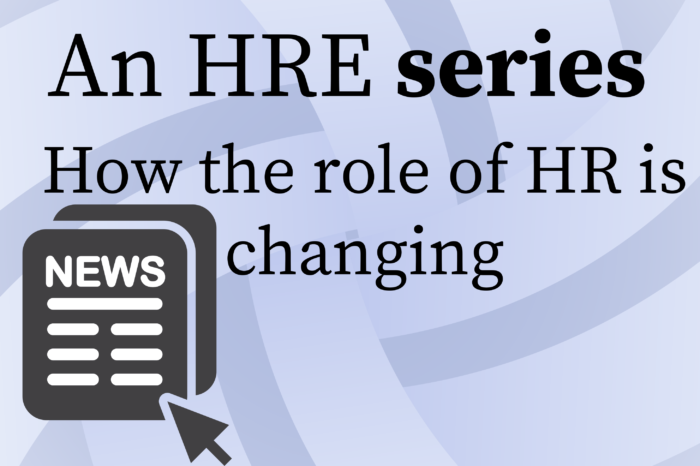In many ways, the Black Lives Matter protests that followed the murder of George Floyd by police officers has fueled a drive for change in corporate America similar to that of the #MeToo movement following the Harvey Weinstein sexual abuse allegations. Companies quickly reacted to the avalanche of reports of celebrity, politician and business leader misconduct by updating existing anti-harassment policies, training and internal complaint procedures. Although companies already had established policies and practices in place, the goal was to improve awareness of these policies.
Likewise, diversity and inclusion policies and programs are not new to the workplace and now with the increased focus on the negative impact of systemic racism, many businesses are looking at making improvements. But as businesses search for ways to increase the effectiveness of D&I initiatives, they are finding that this process is more difficult than drafting a policy update.

In the media, we have seen major shifts in certain institutions that have finally acknowledged and corrected longstanding issues with diversity and inclusion, but this has happened due to external pressures. Examples include NASCAR’s decision to ban confederate flags at races and events; the NBA allowing players to kneel during the National Anthem; and NFL team in Washington, D.C., changing its name after pressure from corporate sponsors. However, examining the areas that need improving in your business on a micro-scale can be more challenging, especially if leadership is content with the status quo and there is little or no external pressure for change.
Related: Listen to Tolonda Tolbert, Ph.D., discuss interrupting systemic discrimination at virtual HR Tech 2020, Oct. 27-30.
While it’s a challenge to determine the best areas for improving diversity initiatives in the workplace, the benefits to the business can be rewarding. The impact of the Black Lives Matter movement in corporate America is palpable and the business justification for having meaningful diversity and inclusion programs in the workplace is proven. Diverse businesses are better places to work; they make better decisions, have a more positive profile in the community and earn greater respect in the marketplace. These and other factors generally result in greater financial returns.
So how can you re-define or invigorate diversity and inclusion initiatives in your business?
Rethink the goals and objectives of Employee Network and Affinity Groups. For businesses that already have diversity and inclusion programs, this is a good place to begin considering improvements. Employee network and affinity groups are one of the most common diversity tools used in this area. Typically composed of African Americans, Asian Americans, Latinx, LGBTQ individuals, women, workers with disabilities, and others, they are generally open to all employees and have a formal structure with leaders, regular meetings and objectives.
Often these groups are not as effective as they could be. They tend to focus on mentorship, helping members make internal connections for specific needs and organizing group team-building events. While these are all good objectives, the efforts are more beneficial to individuals personally and have less impact on their professional development. These groups also benefit an organization’s newer employees more than long-term ones.
These existing groups can become pipelines to develop and promote diverse talent that contributes to the overall success of the business. For example, they can be instrumental in recruitment and retention efforts by helping companies gain perspective on how to appeal to target populations. They are also a great source for ideas to develop or revise policies, initiatives and services to improve the business and to identify blind spots that may allow inequitable treatment or bias to persist in the workplace.
Employee network and affinity groups also can provide feedback on products and marketing campaigns, help with authentic community outreach and improve the business’ overall reputation in the community. This work not only benefits the business but helps to develop talent and improve leadership skills and professional development for employee network and affinity group members that will benefit them in other aspects of their career.
If your business does not have existing employee networks or affinity groups, focus groups can be useful to examine areas for improvement in the organization and brainstorm areas to improve diversity.
Consider unconscious bias training. Many managers remain unaware of how bias impacts diversity and inclusion in the workplace. Diversity is often confused with affirmative action, which it is not. Diversity works to change the culture within the organization to make it more inclusive for workers of all racial or ethnic backgrounds, religions, marital status, sexual orientation, economic status and other categories. Business leaders must be aware of the concept and the impact of unconscious bias to understand how to promote diversity.
Related: Fighting bias through data-driven software development
Effective unconscious bias training prepares the individual to unpack and acknowledge their own biases and highlights how their fast-thinking assumptions can result in decisions that create more opportunities for some individuals and less for others. The goal of this training is to improve self-awareness and to help employees counteract their snap judgments that lead to unfair treatment and poor decision-making in the workplace, which can impact, hiring, mentoring, promotion, discipline and termination. When considering unconscious bias training, companies should partner with an experienced service provider to structure a program that is in tune with their organizational goals, legal concerns and workplace culture.
Evaluate new opportunities for recruiting and retention. Lack of diversity in an organization, and in leadership positions in particular, is viewed with suspicion and signals that there may be an underlying problem in the organization. Ineffective strategies in recruiting and promoting from within can lead to retention problems. Diversity cannot be achieved unless diverse candidates are sought and retained. Hiring a chief diversity officer or consultant can help. These professionals develop strategies to help the company identify and target organizations that have the diverse talent the business is looking for, such as historically Black colleges and universities, diverse community organizations or business groups.
[click_to_tweet tweet=”4 ways #HR can invigorate #diversity and #inclusion in the #workplace #DiversityandInclusion #Blacklivesmatter ” quote=”Tweet this story” theme=”style3″]
To improve retention, businesses should look at how they can improve opportunities for promotions or lateral transitions to all qualified candidates. Employee network and affinity groups in the organization may be useful to help identify candidates and to encourage qualified individuals to apply for positions. This will create a pipeline for success within the organization, which is important because diverse applicants tend to look at the achievements of diverse employees already working in an organization.
We are at the beginning of making meaningful changes in diversity and inclusion in the workplace. Every organization will have its own challenges to overcome. The important thing is to start somewhere and develop a plan for improvements. It is too early to predict the impact of the Black Lives Matter movement on corporate America, but we seem to be off to a good start.



